Last Updated on February 16, 2024 by teamobn
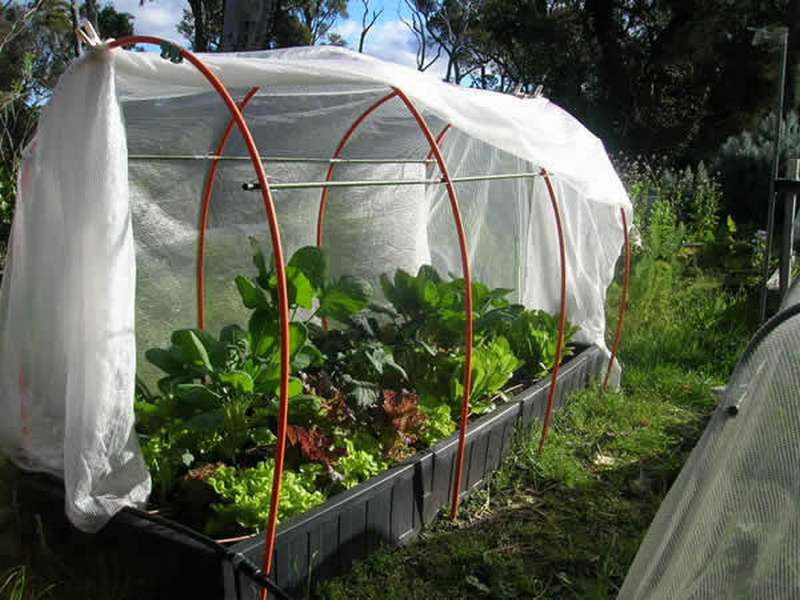
Make your gardening easy with this raised garden bed with cover!
The success of your vegetable garden depends on a number of factors including how well they’re protected from outdoor elements. For example, depending on your location, your plants might be affected by strong winds, hot sun, frosts, or all three in the same location!
Benefits of Raised Garden Beds
1. Gives you Great Walkways
Some plants get too big that they consume all the space in the garden. A raised garden bed with cover prevents these plants from going all over your garden. Where you can maintain your nice walking area. You can even decorate your walking area with various types of stones and this also keeps out the weeds.
2. Increased production
Raised gardens reduce the risk of infestation, are easier to maintain, and have more air circulation since the soil is not compacted. These benefits result in more produced plants and vegetables.
3. Portability
Raised gardens can be portable, like pots. This will depend on how you build it. Portability benefits give you the advantage of easy relocation for your garden. Like when you need to move it due to better sunlight or better shade or you just like to redo your garden landscape.
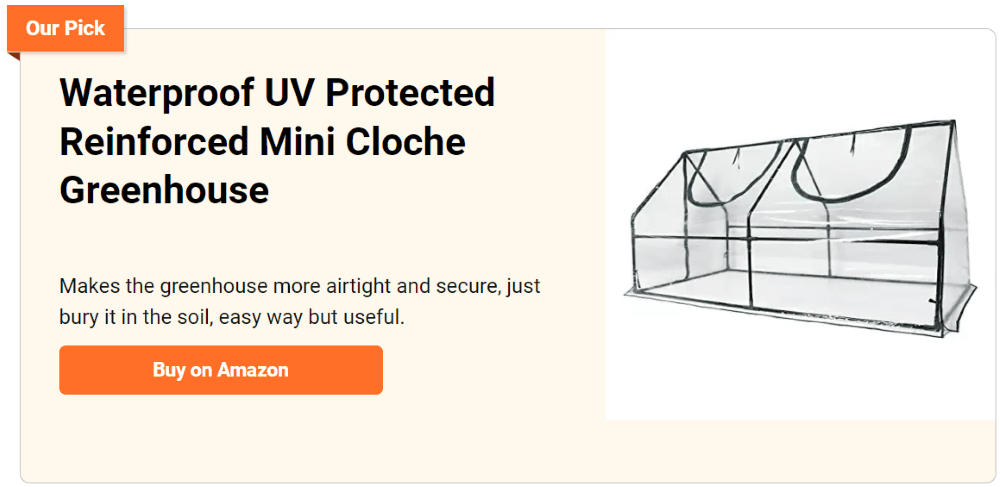
4. Grows Faster
Raised gardens are good if you would like to grow small amounts of plants. Since the soil is not compacted with fewer weeds and pests, the plants will grow faster.
5. Improved Drainage
Since the soil is less compacted in a raised garden bed, this will give a better drainage system. A better drainage system for plants gives more moisture and air circulation. That results in healthier and more productive plants.
6. Reduced Infestation
Raised garden beds make it difficult for pests to get into your plants. The higher the raised garden, the more difficult it would be for the pests. The box helps make a barrier for the plants from these pests.
7. Less Difficult to Maintain
A raised garden bed helps your back and knees since you don’t have to kneel to maintain your garden. Unlike flat gardens, these will give difficulties for your back and knees. This is also applicable to disabled people and senior citizens. Raised gardens will help them continue gardening with less difficulty and without having issues with their conditions.
8. Gives Safety
When you have chooks, it is better to have these raised gardens. This will give them a hard time reaching your plants, so they will decide to leave them alone instead. Especially when you have a raised garden with cover. The running-around squirrels and flying birds will no longer be able to feast on your plants.
9. Better Air Circulation
Since the soil in raised gardens isn’t compacted, this gives room for better circulation. It allows it to stay light and gives your plants’ roots room to breathe. This makes them healthier.
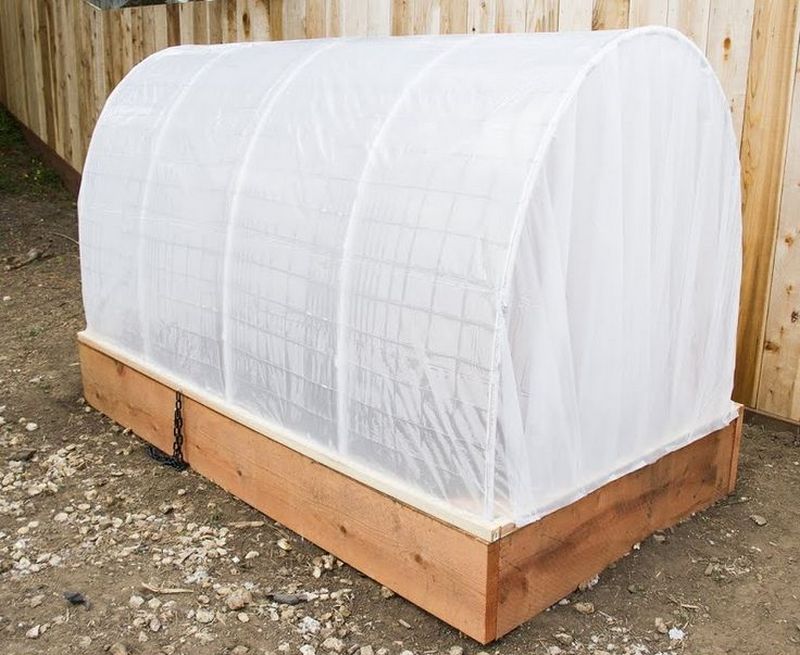
10. Separated with The Tree’s Roots
In a traditional garden, plants and trees’ roots get mixed up. In a raised garden bed, the plants’ roots get to have their own space.
11. Longer Growing Season Period
Since these raised garden beds have a cover, they avoid extreme sunlight in summer and strong winds during typhoons. They thaw a little faster than the traditional soil since the soil in them is not part of the ground.
12. Stands Out
Raised garden beds are appealing, and since it’s higher from the ground, they stand out from the rest. The beauty of plants in a raised garden bed is noticeable because of all the benefits it gets.
13. Cost Efficient
Building raised gardens is not expensive, since you will only need a few wood slabs, nails, skills, and creativity. You will just need to decide how small or big you want your raised garden would be. The smaller, the cheaper. It’s optional to have it built in concrete or with stones. But for starters, a wooden raised bed will be the best option.
This raised garden bed with cover allows you to grow garden produce while keeping them protected all year round.
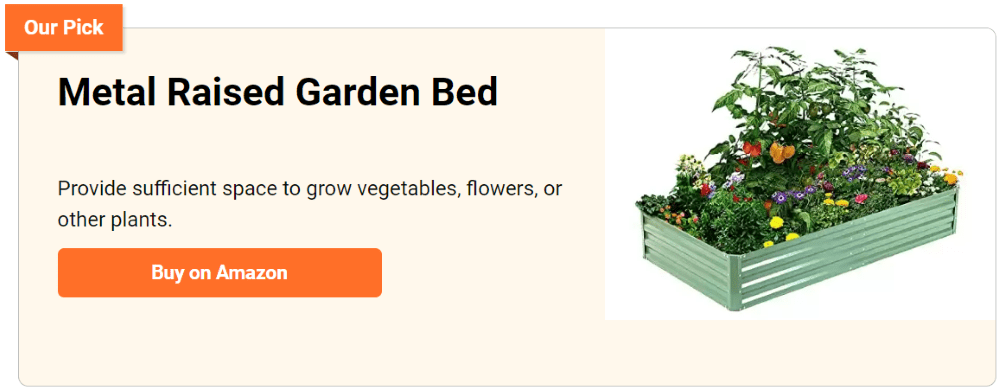
How to Make a Raised Garden Bed With Cover
You’ll need these materials:
- 6- PVC Pipes, 1/2″, 10′ long (aka Schedule 40)
- 2- 2″x 6″ x 8′ Wood Boards
- 1- 2″ x 6″ x 6′ Wood Board
- 1- 2″ x 2″ Wood Strip
- 4- Metal Corner Braces
- 3 ml clear Plastic Roll
- Pipe Clamps with matching Screws, 1 1/2″ Galvanized Nails, Hammer and
- Heavy-duty black Plastic
- Greenhouse Plastic
And these tools:
- Staple Gun
- Drill
- Hammer
Click on any image to start the lightbox display. Use your Esc key to close the lightbox. You can also view the images as a slideshow if you prefer 😎
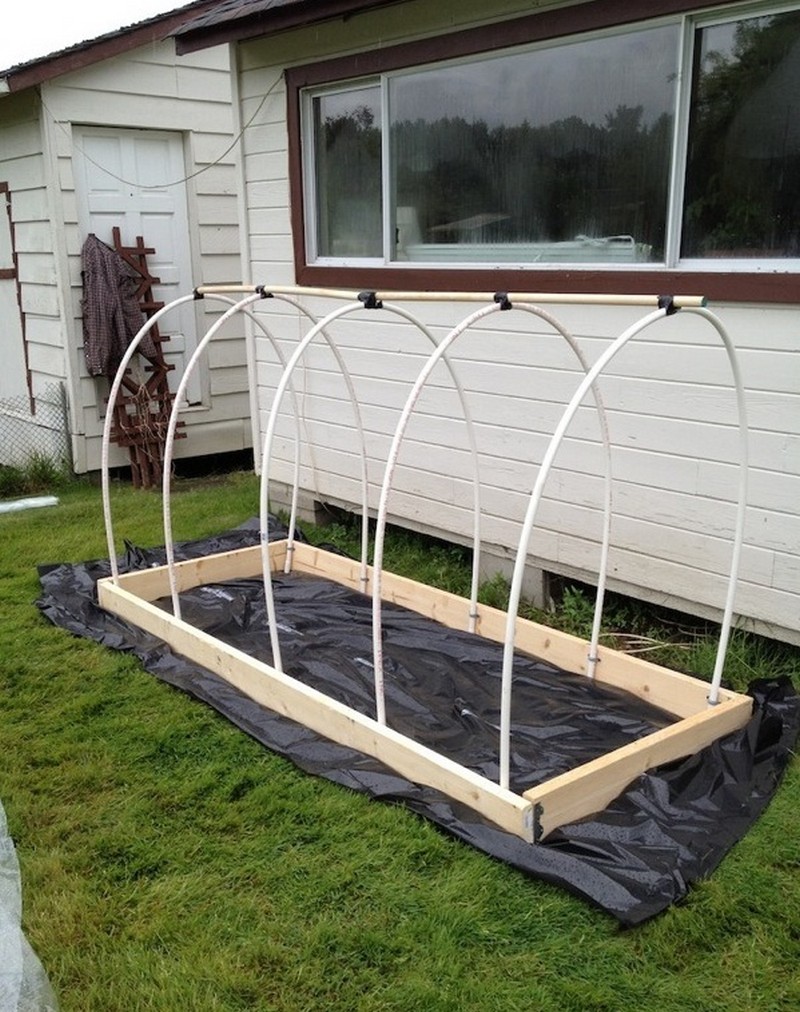
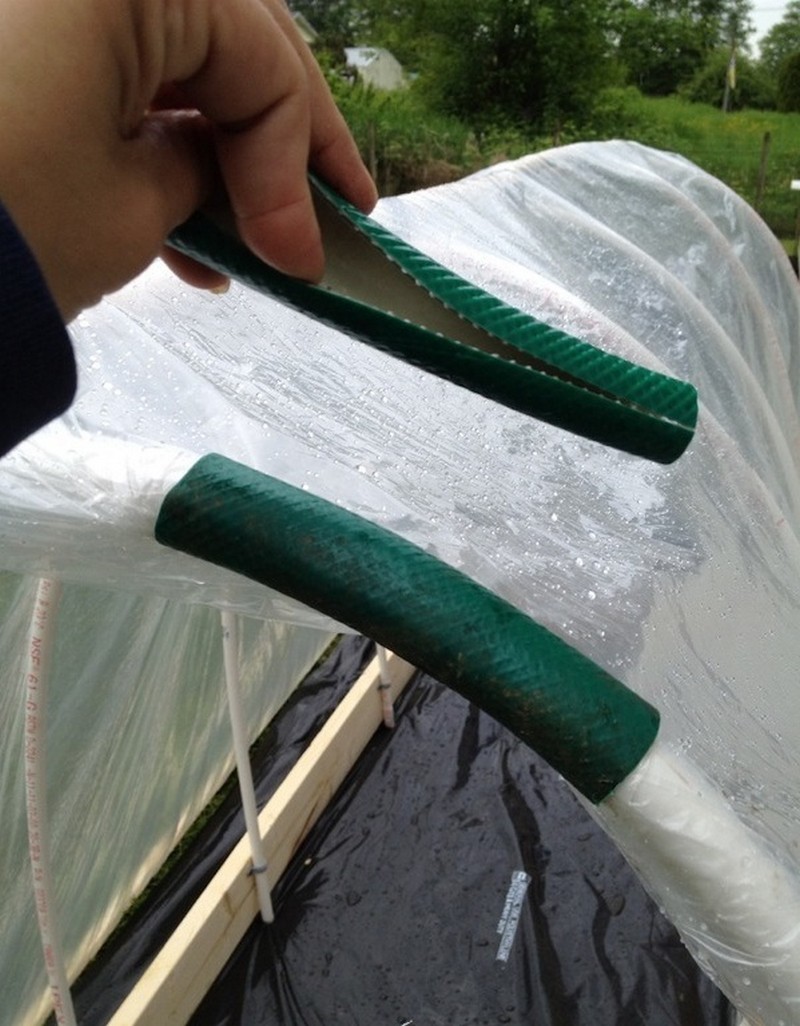
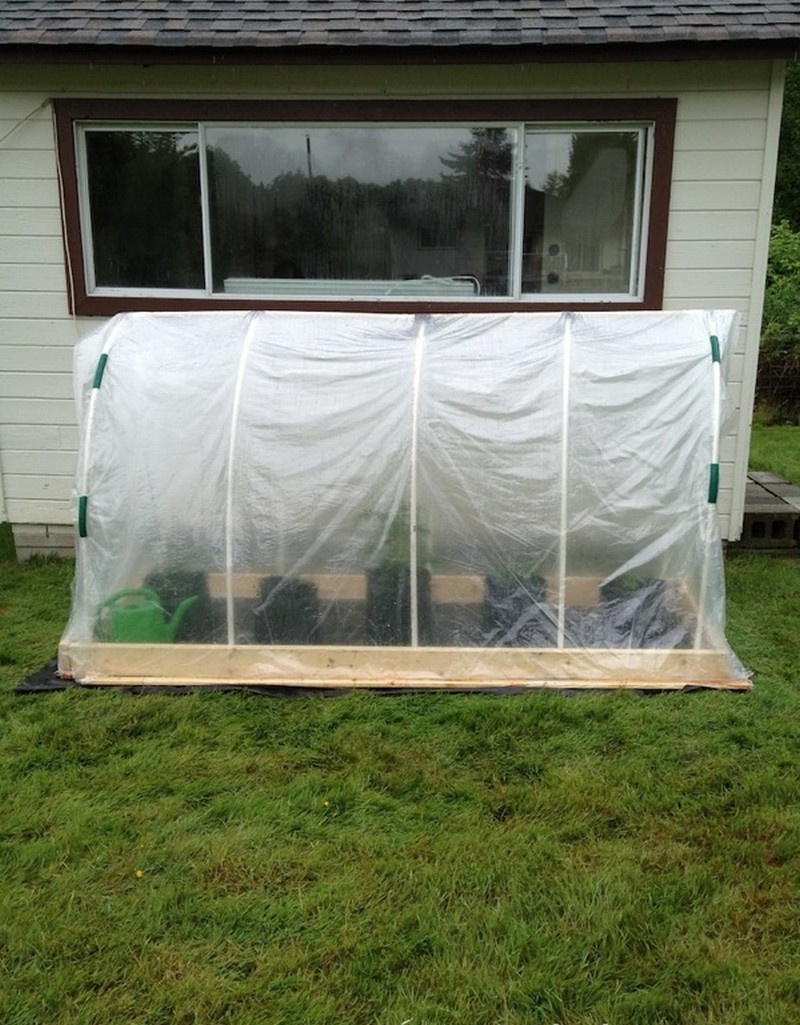
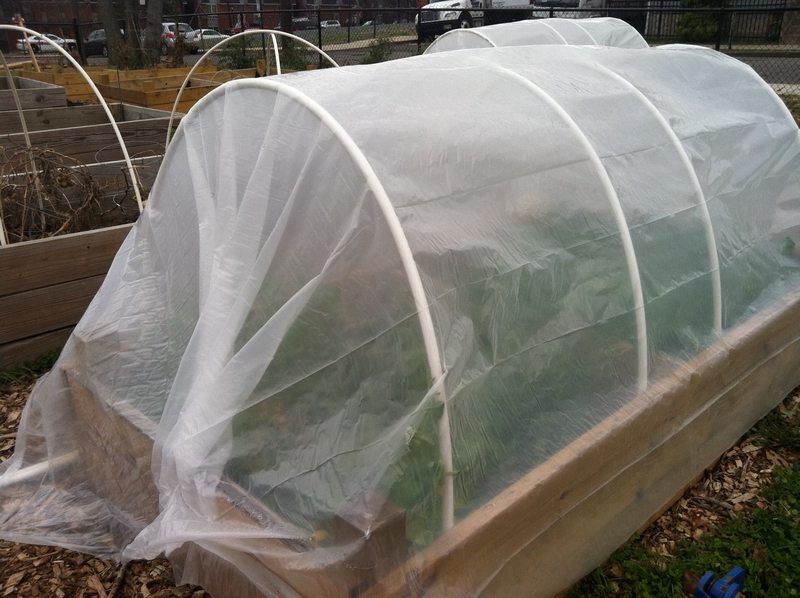
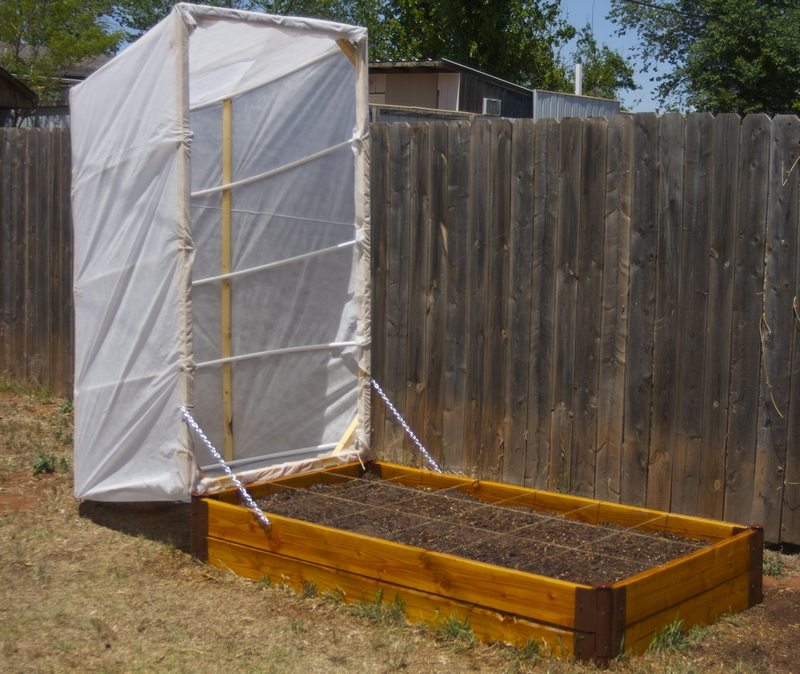
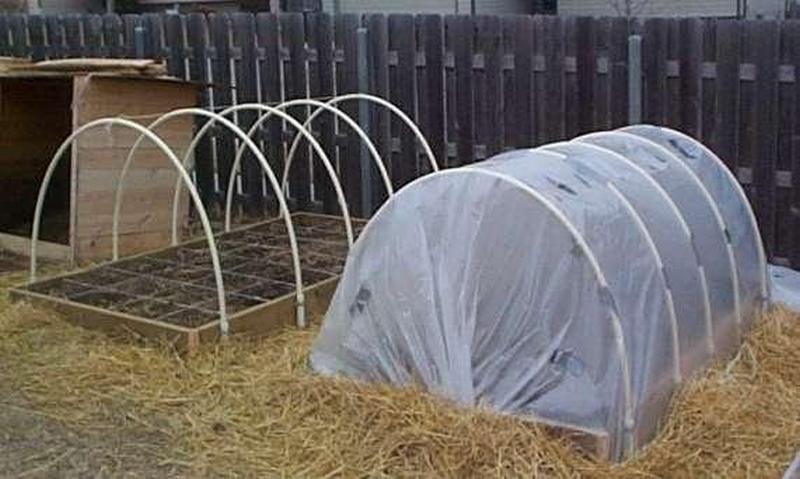

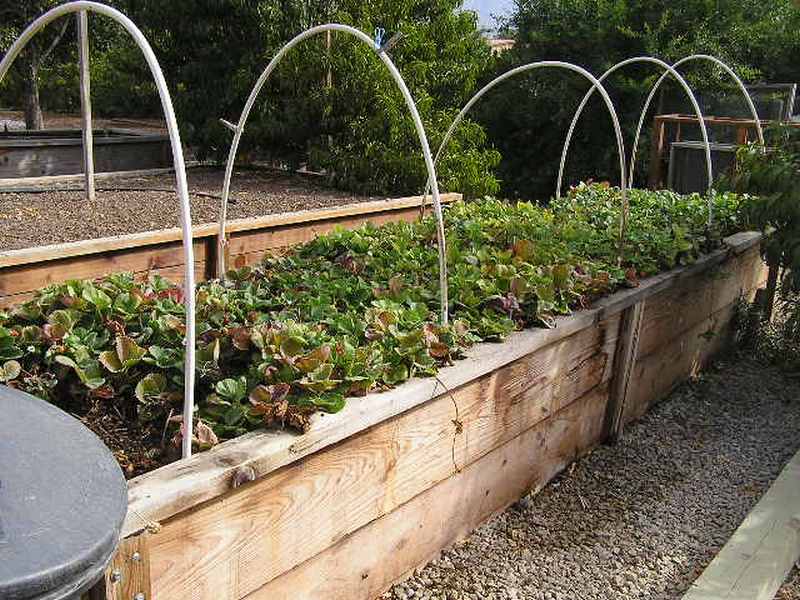

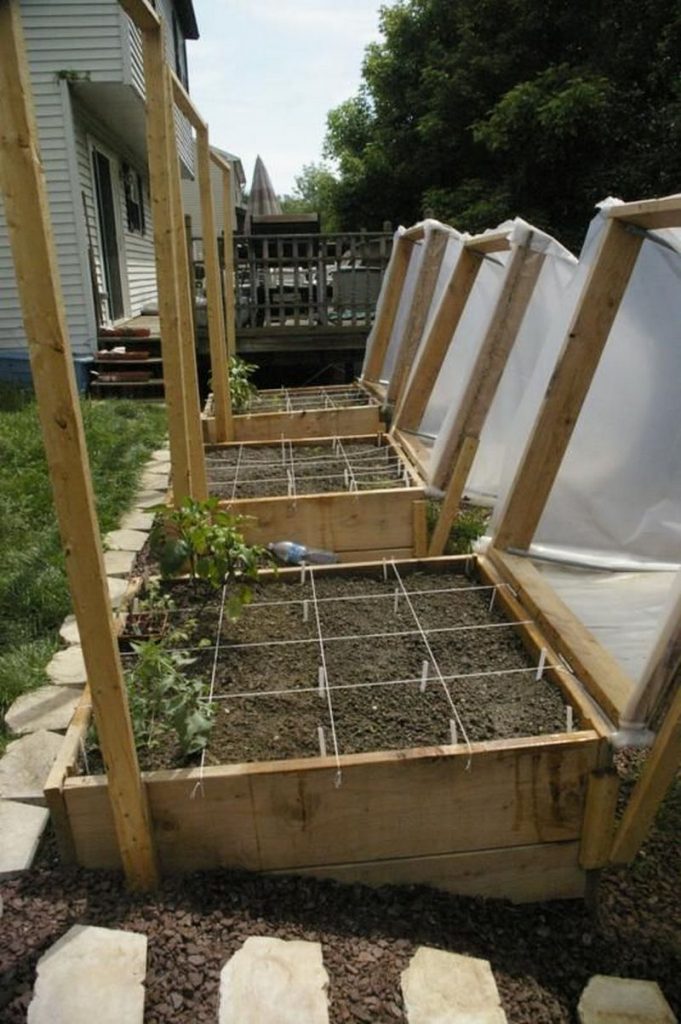
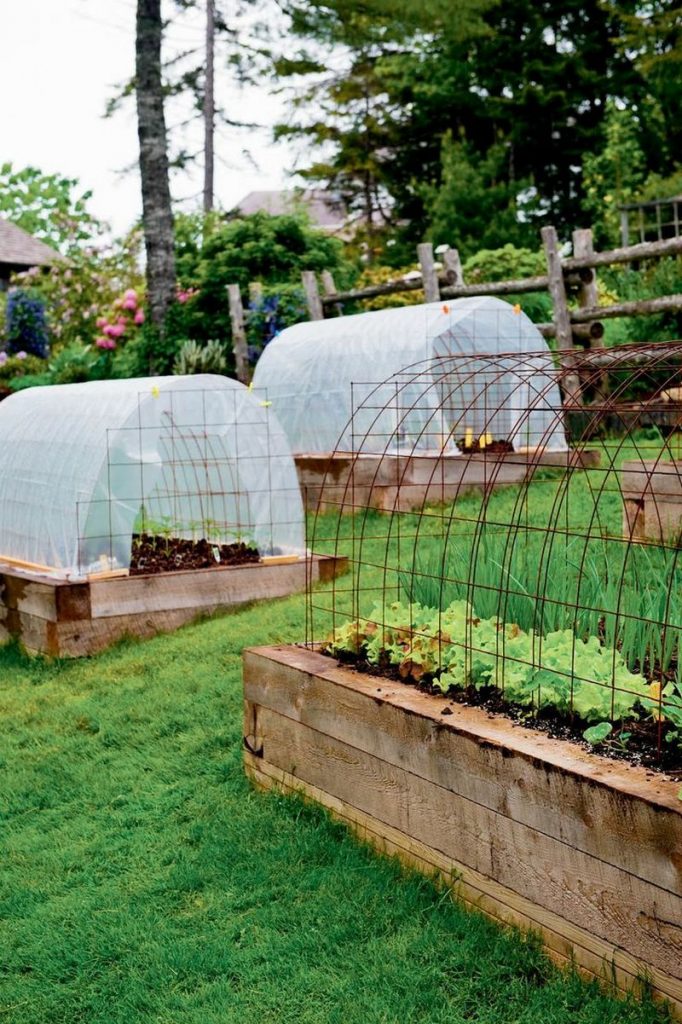
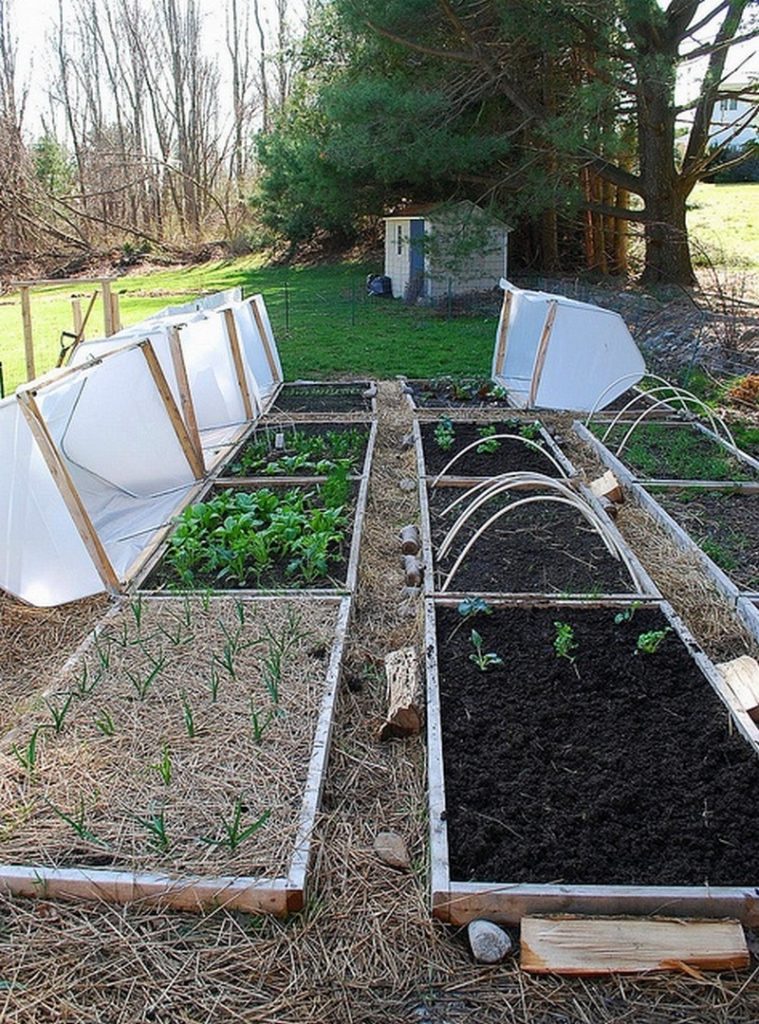
To make a raised garden bed with cover using the materials provided, follow these steps:
1. Prepare Materials:
Gather all the materials listed, including PVC pipes, wood boards, metal corner braces, plastic rolls, pipe clamps, screws, nails, hammers, and greenhouse plastic.
2. Cut PVC Pipes:
Using a saw, cut four PVC pipes into equal lengths, each measuring 2.5 feet (30 inches) long. Cut two additional PVC pipes to 3 feet (36 inches) long for the cover frame.
3. Assemble Raised Bed Frame:
Lay out the 2″x 6″ wood boards to create a rectangular frame for the raised bed. Place the 8-foot boards parallel to each other and attach the 6-foot board perpendicular to them at each end using screws and pipe clamps.
4. Attach Corner Posts:
Position one PVC pipe at each corner of the wooden frame to serve as corner posts. Secure them in place with pipe clamps and screws, ensuring they are flush with the top edge of the wood boards.
5. Reinforce Corners:
Install metal corner braces at each corner of the frame to reinforce the connection between the wood boards and PVC pipes. Use galvanized nails to secure the corner braces firmly in place.
6. Install Support Strip:
Cut the 2″x2″ wood strip to the length of the shorter side of the raised bed (6 feet). Affix it horizontally along the inside edge of the wooden frame, halfway up the height of the PVC pipes, using nails to provide additional support.
7. Line with Black Plastic:
Line the inside of the raised bed frame with heavy-duty blak plastic to prevent soil contact with the wood. Cut the plastic to size and secure it to the inside of the frame using galvanized nails or staples.
8. Build Cover Frame:
Use the remaining PVC pipes to construct a rectangular frame for the cover. Lay out two 10-foot PVC pipes parallel to each other and place the two 3-foot PVC pipes perpendicular to them at each end. Secure the corners with pipe clamps and screws.
9. Attach Greenhouse Plastic:
Cover the PVC cover frame with the clear plastic roll, ensuring it overlaps the edges for a secure fit. Secure the plastic to the PVC frame using pipe clamps or staples, leaving one side open for ventilation.
10. Mount Cover to Raised Bed:
Position the cover frame over the raised bed and attach it to the corner posts using pipe clamps or screws. Ensure the cover fits snugly over the raised bed but can be easily removed for access.
11. Fill and Plant:
Fill the raised garden bed with cover with soil and plant your desired vegetables, flowers, or herbs. Ensure the cover provides adequate protection while allowing sunlight and ventilation for optimal plant growth.
12. Maintenance:
Regularly water and maintain your garden as needed, and monitor the cover to ensure it remains secure and functional. Adjust ventilation as necessary to maintain optimal growing conditions.
By following these steps and using the provided materials, you can create a raised garden bed with cover, providing a protected environment for your plants to thrive.
Thanks to Sowanddipity for sharing strategies on how to make a raised garden bed with cover.
If you liked this project, you will also like viewing these gardening ideas…
Safety Precautions When Building Your Raised Garden Beds
When working on a DIY raised garden bed with cover, it is essential to prioritize safety. Here are some safety precautions to consider:
- Read Instructions: Familiarize yourself with the project plan, including instructions for all materials and tools, before starting work.
- Personal Protective Equipment (PPE): Wear appropriate safety gear such as gloves, safety goggles, and sturdy footwear to protect against splinters, sharp edges, and other potential hazards.
- Use Tools Safely: Handle tools with care and follow proper usage guidelines. Use tools only for their intended purposes, and be cautious when using sharp implements or power tools.
- Work in a Safe Area: Choose a well-ventilated workspace with adequate lighting. Ensure the area is clear of clutter and tripping hazards to prevent accidents.
- Beware of Sharp Objects: Be mindful of sharp edges on materials such as wood or metal. Handle these materials carefully to avoid cuts or injuries.
- Lift Heavy Objects Properly: Use proper lifting techniques when handling heavy materials to prevent strains or injuries. If necessary, ask for assistance or use mechanical aids to lift heavy items.
- Protect Against Sun Exposure: If working outdoors, protect yourself from the sun by wearing sunscreen, a hat, and lightweight, breathable clothing. Take breaks in shaded areas to prevent heat-related illnesses.
- Handle Chemicals Safely: Use caution when working with chemicals such as adhesives, paints, or preservatives. Follow the manufacturer’s instructions and work in a well-ventilated area to minimize exposure.
- Keep Children and Pets Away: Ensure that children and pets are kept away from the work area to prevent accidents. Store tools and materials safely out of reach when not in use.
- Inspect Materials and Equipment: Before starting the project, inspect all materials and equipment for damage or defects. Replace any damaged items to prevent accidents during construction.
- Work with a Partner: If possible, work with a partner to assemble the raised garden bed with cover safely. Having an extra set of hands can help prevent accidents and make the project go more smoothly.
By following these safety precautions, you can minimize the risk of accidents and injuries while building your DIY raised garden bed with cover.
The Wrap Up
The advantages of constructing a DIY raised garden bed with cover are plentiful and diverse. From fostering optimal plant growth to protecting against pests and adverse weather conditions, this project offers numerous benefits for gardeners of all levels.
By implementing proper construction techniques and adhering to safety precautions, individuals can create a personalized garden space that not only enhances the aesthetic appeal of their outdoor area but also provides a sustainable source of fresh produce.
Whether you are a seasoned gardener or new to the world of horticulture, the versatility and practicality of a DIY raised garden bed with cover make it a rewarding endeavour that yields abundant rewards for years to come.
Frequently Asked Questions
1. How does a raised garden bed with cover benefit plant growth?
A raised garden bed with cover provides a controlled environment that promotes optimal plant growth by protecting against harsh weather conditions, pests, and weeds. The cover helps to regulate temperature and moisture levels, creating ideal conditions for plants to thrive.
By reducing evaporation and maintaining consistent moisture levels in the soil, the cover ensures that plants have access to an adequate water supply. This helps prevent drought stress and promotes healthy root development, leading to stronger and more resilient plants.
2. What types of covers can be used for a raised garden bed?
Various covers can be used, including plastic sheets, netting, or fabric row covers. The choice of cover depends on factors such as climate, plant species, and specific gardening goals.
The choice of cover depends on factors such as the local climate, the specific needs of the plants being grown, and the gardener’s goals. By selecting the right cover for their raised garden bed, gardeners can create an optimal growing environment that promotes healthy plant growth and maximizes yields.
3. Does a raised garden bed with cover require less maintenance?
Yes, compared to traditional ground-level gardens, raised garden beds with covers typically require less maintenance. The cover helps to reduce weed growth, conserve moisture, and protect plants from pests, resulting in fewer tasks such as weeding and watering.
Covers help to retain moisture in the soil by reducing evaporation. By shielding the soil from direct sunlight and wind, covers minimize water loss, especially in hot and dry climates. This means less frequent watering is required, saving both time and water resources.
Raised garden bed covers act as a physical barrier that can deter pests such as insects, birds, and small animals. By preventing pests from accessing the plants, covers reduce the risk of damage and disease. This eliminates the need for pesticide applications and other pest control measures, leading to less maintenance and healthier plants.
4. Can a raised garden bed with cover extend the growing season?
Yes, by providing insulation and protection from frost, a cover can extend the growing season for certain crops. Additionally, covers can help to create a microclimate within the garden bed, enabling gardeners to start planting earlier in the spring and continue growing later into the fall.
5. Is it difficult to build a DIY raised garden bed with a cover?
Building a DIY raised garden bed with cover can be relatively straightforward, especially with the availability of online tutorials and pre-made kits. Basic carpentry skills and tools are typically sufficient, and the project can often be completed over a weekend.
6. What are the cost savings associated with a DIY raised garden bed with cover?
Compared to purchasing produce from the grocery store, growing your own fruits and vegetables in a raised garden bed with cover can result in significant cost savings over time. Additionally, building your own raised garden bed with cover can be more economical than purchasing a pre-made one.
7. Can a raised garden bed with cover be used for organic gardening?
Yes, raised garden beds with covers are well-suited for organic gardening practices. The raised design helps to prevent soil compaction and contamination from surrounding areas, while the cover provides a barrier against pests without the need for chemical pesticides.
Covers help to conserve moisture in the soil by reducing evaporation, which is crucial for organic gardening, where synthetic fertilizers and chemical additives are not used. Consistent soil moisture levels promote healthy plant growth and reduce the risk of stress-related issues, such as wilting or blossom-end rot. By minimizing water loss, covers contribute to overall water efficiency in the garden.
8. How can you maximize the benefits of a raised garden bed with cover?
To maximize the benefits, it is essential to choose the right cover material for your specific gardening needs and climate conditions. Additionally, proper maintenance, including regular watering, fertilizing, and monitoring for pests, can help ensure optimal plant growth and productivity.
These FAQs address common questions that gardeners may have regarding the benefits and practical aspects of constructing a DIY raised garden bed with cover.








